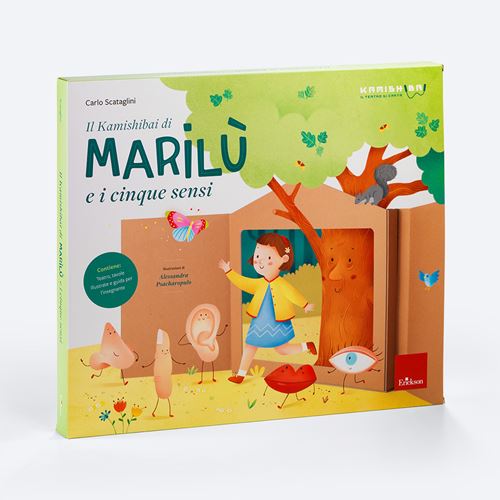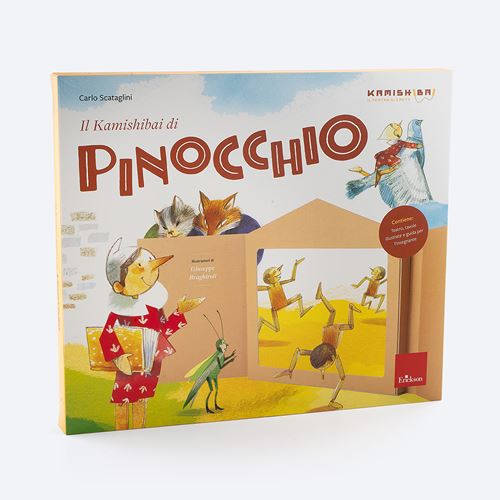 EN
EN
 PT
PT
Narrate and reenact stories using a paper theatre
The kamishibai is a small paper theatre that turns every reading into a captivating performance, full of emotion and wonder. Originating in Japan in the 12th century, kamishibai is now used both in schools and at home to encourage listening, language development, creativity, and active participation. As the illustrated story cards slide into view and the narrator’s voice leads the tale, children are immersed in an experience that uniquely combines images and words.
The Erickson kamishibai is designed to fit naturally into the school routine: it can be used for reading aloud, inventing stories, dramatising, and letting the imagination run free.
USES FOR KAMISHIBAI
Listening to stories, as well as re-telling them and inventing new ones, is fundamental for children’s cognitive and emotional growth because it allows them to know and understand the world, to become aware of their own inner self and that of others. With Erickson’s kamishibai, there is also a direct connection to didactics, as the contents of the stories are carefully selected based on the didactic objectives of kindergarten and primary school.
Kamishibai is particularly useful for:
HOW DOES IT WORK?

First, the theatre is placed on the table and the boards are inserted in order of appearance, from 1 to 14.

The narration proceeds by scrolling the sheets from front to back, removing the front board and inserting it behind all the others: on the front the illustrations capture the attention of the children, on the back the adult reads the story.

On the back of each board, next to the text, there is a thumbnail of the image that the viewers see and a QR-code for accessing sound effects and music.
NARRATION SUGGESTIONS
Before: It is very important to make the narrative magical and engaging, creating a stimulating atmosphere suitable for children: setting up the lights, taking care of the sound accompaniment, arranging pillows and rugs on the floor, etc.
During: The stories chosen for the kamishibai have a didactic-educational purpose and allow the teacher to link the narration to numerous activities on the five senses (sight, hearing, smell, touch and taste) to expose the children to a multi-sensory experience where they can learn how to know and manage their emotions.
After: It is possible to reflect on the themes, context, and characters encountered during the narration. By inviting children to rework the story of Marilù and recite new narratives, they will give free rein to their imaginations.


The Kamishibai of Marilù and the five senses
14 illustrated story cards tell the tale of Marilù and accompany children on a journey to discover the five senses through the art of kamishibai.

The Kamishibai of Pinocchio
14 illustrated story cards narrate the story of the world’s most famous puppet – Pinocchio – through the magical storytelling style of kamishibai.